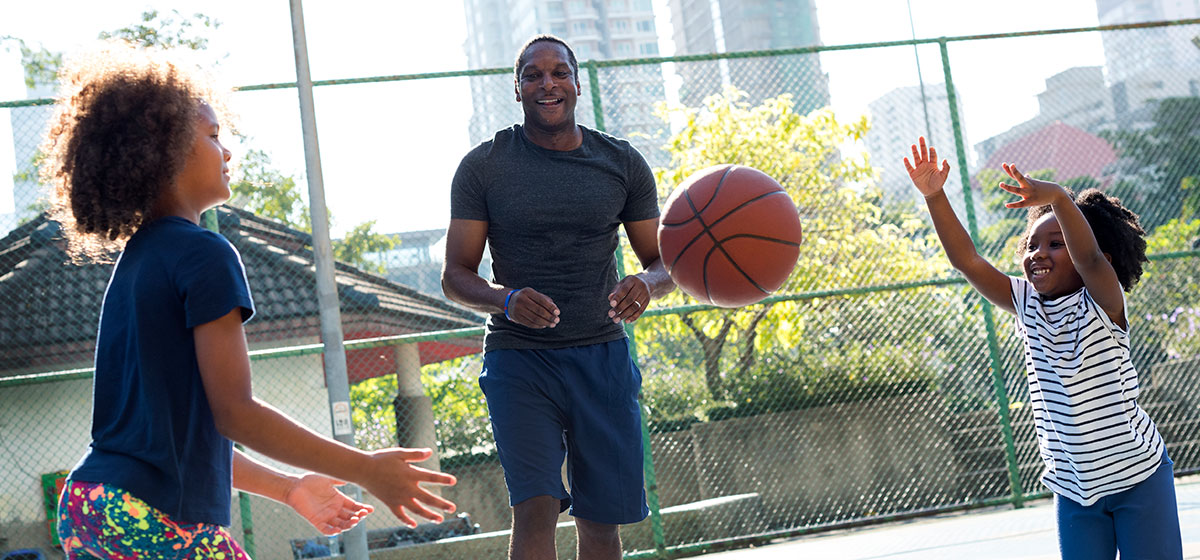How Can We Motivate Kids to Exercise?

Question: “I have read that American children are falling behind the rest of the world in performance on basic fitness tests. How can we get kids to exercise more and improve their fitness?”
Your assessment of the physical status of our younger generation is spot on. Over the last few decades, American children have become fatter, less physically fit and more sedentary than ever before. Inactivity has become the rule rather than the exception, where children tend to spend the bulk of their leisure time watching TV or playing video games rather than engaging in physical activity. According to the American Academy of Child and Adolescent Psychiatry, children ages 8–12 in the United States, on average, spend 4–6 hours a day watching or using screens (TV, phones, laptops, etc.) and teens spend up to 9 hours.
Arguably such behavior can to some degree entertain, teach and keep children occupied, but too much screen time often leads to decreased physical activity and less time spent outdoors This leads to lower fitness levels and potential body weight issues, as evidenced by the increased prevalence of childhood obesity. It is not surprising that the percentage of American children who are overweight or obese has more than tripled in the past 50 years. According to the New England Journal of Medicine, the United States presently has the highest level of obesity among children and young adults among the world’s 20 largest countries. While it is true that obesity in children is not due entirely to inactivity — poor diet is also a factor — lack of exercise is a major contributor.
Motivating kids to be physically active on a regular basis, particularly when they are not in the habit of doing so, is no easy task. A child’s perception of exercise and physical activity is influenced by a number of factors. Parents, teachers, peers and the media all play a role. Because young children spend much of their time at home, I believe the exercise experience should begin there.
Merely telling children that exercise is good for them is not sufficient. As the age-old adage states, and as most parents attest to be true, “Children tend to be poor listeners but great imitators.” Never lose sight of the fact that modeling is a powerful learning tool that can help to shape behavior, both good and bad.
Dr. Gail Ann Polkis, an expert in children’s motor development, says that establishing a solid foundation in fundamental motor skills provides a pathway to lifelong, regular physical activity. Kids learn to enjoy movement and physical activity at an early age and continue to do so as they get older. Dr. Polkis emphasizes that the ages 4 to 9 years are a critical period for learning foundational motor skills, general movements that lead to more complex skills. She believes that it is in a child’s best interests to start the process early in life, as habits learned early often have a lasting effect on future behavior.
Strategies to get kids moving
Children, much like adults, are more apt to repeat a behavior if they enjoy it. Exercise and physical activity are no different, so fun and enjoyment should be the primary motivating factors for getting kids active on a regular basis. Improved health, fitness and weight management should be beneficial by-products, but not necessarily the primary goals.
Participating in organized school or community-sponsored sport programs such as soccer, basketball and tennis is one way of getting kids involved in activities that promote physical fitness. Such programs typically have scheduled practices, scheduled games and adult supervision. The kids simply must show up and participate — but Dr. Polkis says that is not enough. Children should also be encouraged and motivated to be physically active on their own, without formal organization and adult supervision. Towards that aim she recommends the following strategies to get kids moving on a regular basis:
- As a parent, be a role model and set a positive example. When possible, walk instead of ride, take the stairs instead of the elevator and go to the gym on a regular basis. Be physically active every day.
- Make exercise a family affair. Hiking, biking, canoeing and cross-country skiing are examples of activities that families can do together.
- Make exercise a social affair. Arrange activities such as a group ice skating, a camping trip or community races.
- Make exercise fun. You can use competition as a motivating force. For example, organize relay races with friends, basketball games, etc.
- Provide each child an opportunity to achieve some success in performing the activity. No one should be made to feel like a failure.
- Provide lessons for learning sport skills. Children (and adults) who achieve some degree of competence with sport-specific skills, such as tennis or golf, will be more likely to enjoy the sport and participate on a regular basis.




